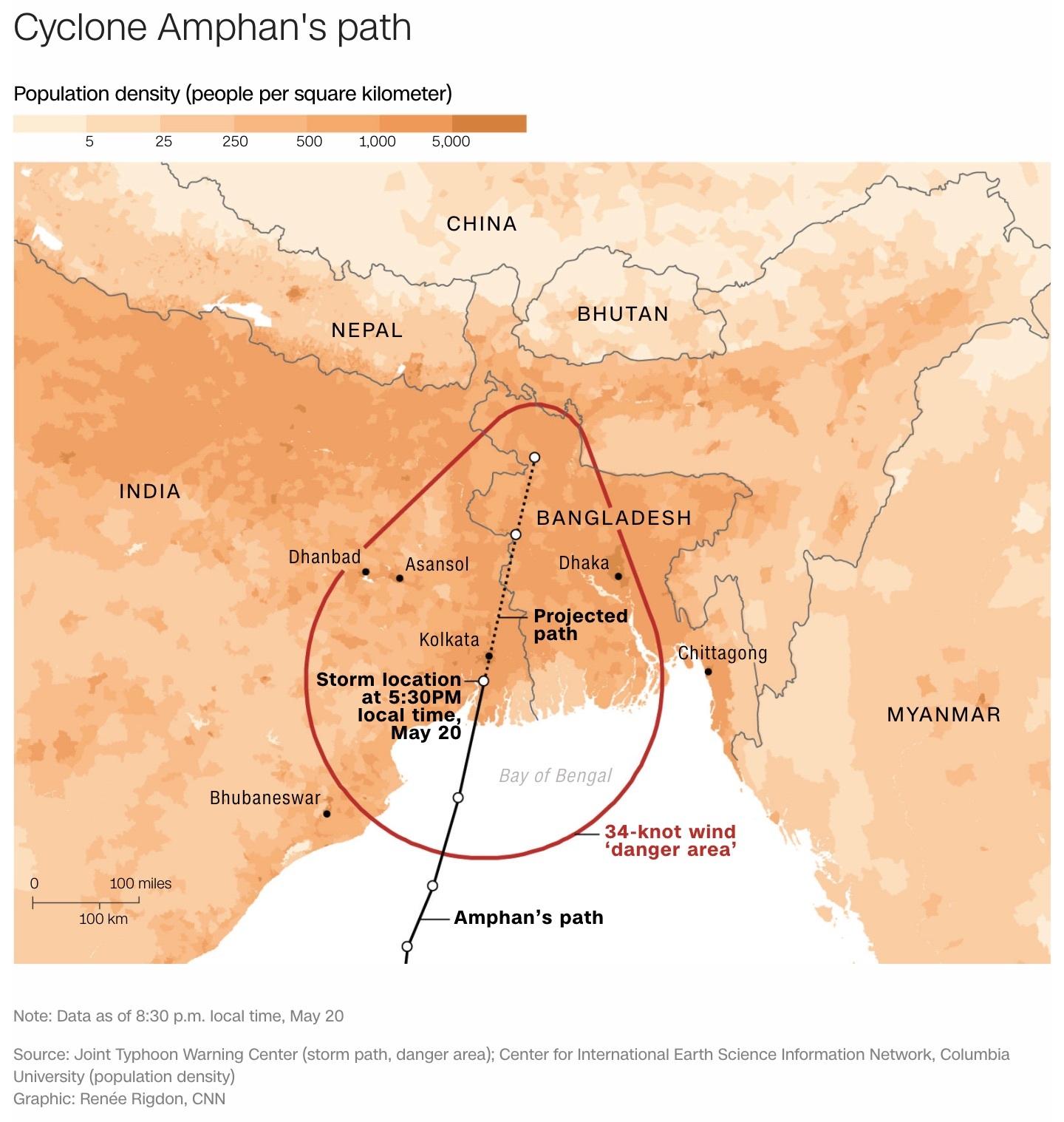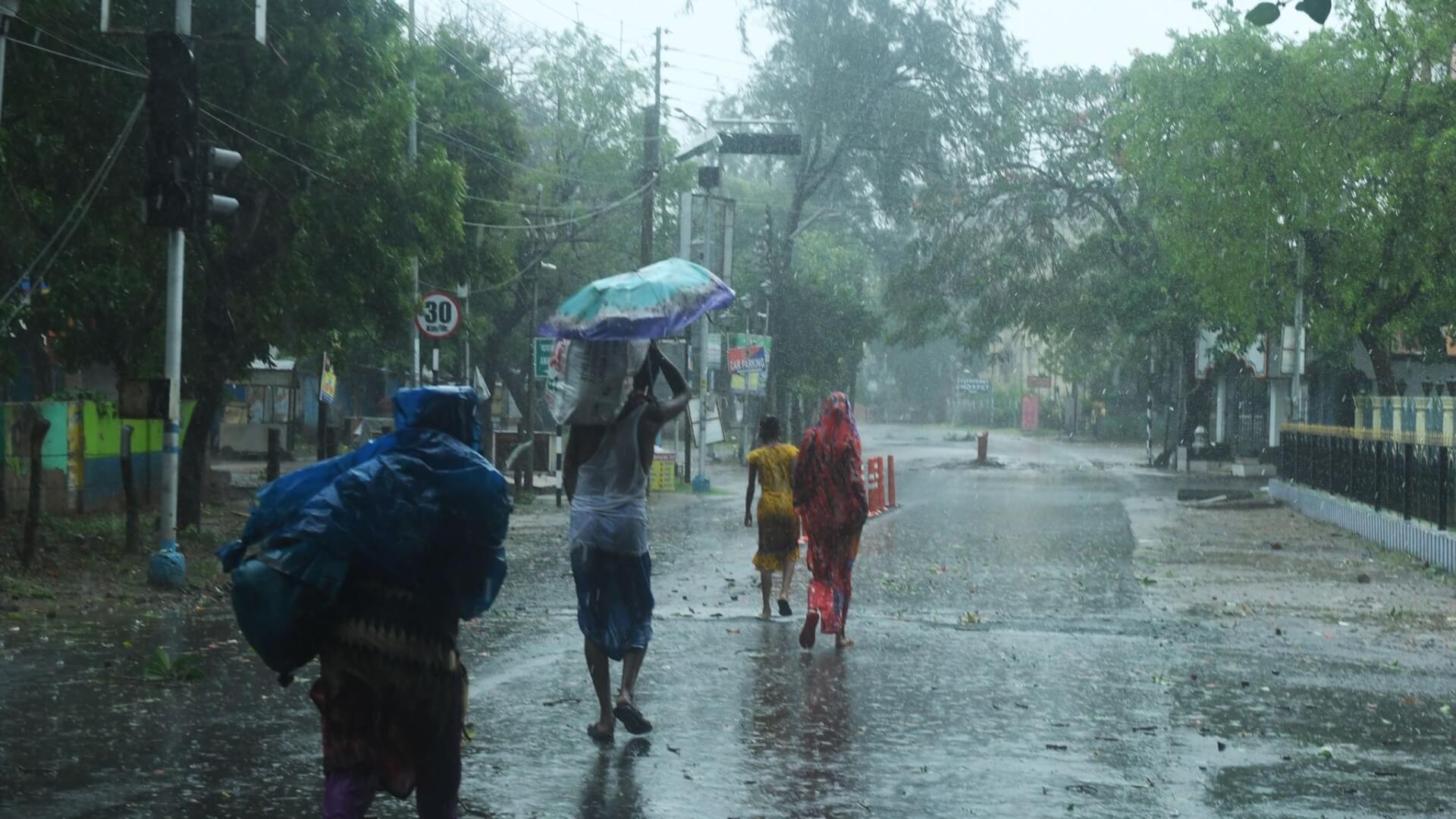Cyclone Amphan emerged from the Bay of Bengal and made landfall in West Bengal and Bangladesh on Wednesday. The cyclone has a wind speed of up to 185 km per hour and a storm surge of around five meters. As of Thursday morning, official numbers report 20 deaths in Bangladesh and West Bengal. However, both countries’ authorities are still looking for precise numbers as information exchange is severely hampered by the destruction of communication channels.

According to the Indian Meteorological Department, the cyclone is expected to deteriorate as it moves further north and north-east and is predicted to recede completely by Thursday afternoon. Officials report that the winds have already weakened and that Cyclone Amphan is no longer a “super” cyclone, but a “very severe” cyclone.
Videos and photographs on social media show immense devastation in the coastal districts of West Bengal and Bangladesh. Bangladeshi officials expressed concern about the impact of the storm on the Sundarbans, which they said bore the brunt of the cyclone. The Sundarbans is a UNESCO world heritage site, famous for its mangrove forests and tigers. Forest chief Moyeen Uddin Khan told the AFP news agency, “We still haven’t got the actual picture of the damage. We are particularly concerned over some wild animals. They can be washed away during storm surge in high tide.”
Another concern for Bangladeshi authorities was the impact of the cyclone on the already vulnerable refugee camps. There were fears that the precipitation could lead to landslides in the camps. However, while officials reported severe damage across the districts on the coastal regions, no major destruction was reported from the refugee camp near Cox’s Bazaar, which houses nearly one million Rohingya Muslims. Nevertheless, despite the fact that the storm made landfall on the other side of the country and weakened along the Bangladeshi coastline, the camp still experienced heavy rainfall and strong winds.
While cyclones are an annual occurrence in both West Bengal and Bangladesh, this is the first “super” cyclone to form in the Bay of Bengal since 1999. Previously, several cyclones caused significant deaths in the region. For instance, Cyclone Sidr, in 2007, led to 3,500 deaths in Bangladesh. Likewise, the super cyclone in 1999 caused 10,000 deaths in Odisha.
The experience from various cyclones led to a better response system for this storm; tree and pole cutters were kept on-hand and mass evacuations were swiftly conducted. However, the ongoing COVID-19 pandemic has impeded the efforts of authorities. West Bengal’s Chief Minister, Mamata Banerjee, said, “The situation is more worrying that the coronavirus pandemic. We don’t know how to handle it… Almost everything is destroyed in the coastal villages of the state.” Similarly, the India National Disaster Response chief, SN Pradhan, remarked, “Perhaps this is happening for the first time… we are facing a dual challenge now, COVID-19 and a cyclone.”
The largest obstacle placed by the COVID-19 outbreak was with regards to evacuation efforts. Authorities struggled to get millions to safety while also maintaining social-distancing to protect them from the risk of COVID-19. Despite both countries ensuring the availability of masks and sanitisers, physical distancing is virtually impossible in such a situation, as evacuees are rushed into reinforced schools, government buildings, and community halls. Even in the face of these difficulties, however, authorities in West Bengal and Odisha managed to evacuate 650,000 residents and used extra shelter space to make social-distancing more practical. A district official from West Bengal said, “We have about 43 cyclone shelters in seven blocks. Together, they can accommodate 50,000 people, but we will have to reduce that number by half because of social distancing.”
Tuhin Ghosh, the director of the School of Oceanographic Studies at Jadavpur University, said that the cyclone will add to the struggles on three levels: “loss to life and property, because the storm was tremendous; loss to basic infrastructure, which will take months to leap back to normalcy, and thirdly, loss to livelihoods due to saline water intrusion and large-scale inundation”. Therefore, Indian and Bangladeshi authorities are now tasked with rehabilitating cyclone victims and reviving the economy to combat the double-impact of the COVID-19 outbreak and the storm.
Image Source: Sky News

